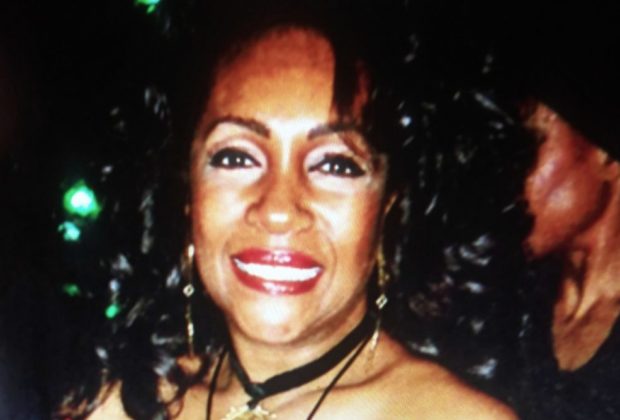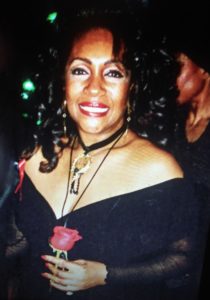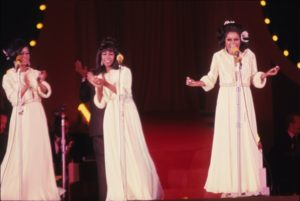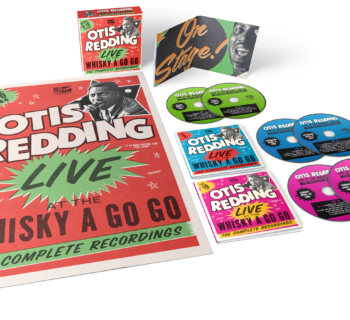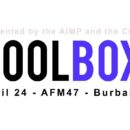Mary Wilson, a co-founder of Motown’s female trio the Supremes passed away on Monday, February 8, 2021 at her home in Henderson, Nevada.
Her death was announced by her publicist Jay Schwartz. The cause of death was not revealed. Wilson was 76.
In a statement to the media, Motown Records founder Berry Gordy Jr. said, “I was extremely shocked and saddened to hear of the passing of a major member of the Motown family, Mary Wilson of the Supremes. The Supremes were always known as the ‘sweethearts of Motown.’ Mary, along with Diana Ross and Florence Ballard, came to Motown in the early 1960s. After an unprecedented string of #1 hits, television and nightclub bookings, they opened doors for themselves, the other Motown acts, and many, many others…I was always proud of Mary. She was quite a star in her own right and over the years continued to work hard to boost the legacy of the Supremes. Mary Wilson was extremely special to me. She was a trailblazer, a diva and will be deeply missed.”
I knew Mary Wilson and interviewed her extensively during 2003 and 2016.
Musical history now illustrates how vital television exposure was for Motown and the label’s recording artists. None were more essential as a booking on The Ed Sullivan Show.
“The relationship between Berry Gordy’s Motown label and The Ed Sullivan Show made music and television history,” stressed filmmaker Andrew Solt of SOFA Entertainment, owners of The Ed Sullivan Show library.
“Soon after the Supremes’ debut on Sullivan (December 1964), it was clear that showcasing the latest Motown releases on CBS on Sunday nights (35 million viewers was average) until 1971 was a way to expose the record company’s newest hits and boost the show’s ratings. Sullivan introduced nearly all the Motown acts, including the Supremes, the Temptations, Stevie Wonder, the Four Tops, Smokey Robinson and the Miracles, Marvin Gaye, Gladys Knight and the Pips, and the Jackson 5.”
“It was really a battle in those days to get black artists on network television in prime time,” emphasized Barney Ales, a former Motown executive.
“Sammy Davis Jr. and Nat Cole were about the only ones—anyone else, they just weren’t accepted. But when the Supremes broke through, we knew we had an opportunity. They looked so great, as well as sounding great. And Harvey Fuqua and Maxine Powell did a wonderful job, grooming the girls, getting them ready for prime time.
“The Ed Sullivan Show was the real breakthrough. Sunday nights, millions of people watching. Once Sullivan took to the Supremes, we knew we were on the right track. And album sales picked up like crazy whenever they were on, so we always made sure to tell the distributors they needed to check their inventory. After the Supremes, we got everyone on Sullivan’s show: Stevie, Gladys, the Temptations. We had a good relationship with the producer, Bob Precht. He liked Motown, and Esther, Berry’s sister, used to take the dressing room keys afterward as souvenirs. They’re probably somewhere in the Motown Museum to this day.”
“For us, being on The Ed Sullivan Show was so much more than record sales,” underscored Mary Wilson of the Supremes during 2003 and 2016 interviews.
“It wasn’t about promoting us. It was about that we had grown up watching The Ed Sullivan Show. We had grown up watching shows where you didn’t see a lot of black people starring on those shows. For us, we were like every other family in America who spent hours watching Ed Sullivan. So for us, being on the show was such a great honor. Because we were there to see the world changing. To see America changing. We were excited! We’re on The Ed Sullivan Show.
“We came from a time when a whole family of all different colors didn’t sit around ‘watching black people on television.’ The Dick Clark tours where before us there were segregated hotels.
“For us, that is what it was all about. We were part of that change. We were part of helping America to see black people, black women, being proud, beautiful and successful. It wasn’t just us, many people before us. But they didn’t have the television to expose them to that wide range of people as we did at the time when we came. We were lucky. And we stood on a lot of shoulders. But we were there when the doors opened.
“The other thing was that we were seen in color after our initial appearances were in black and white. Recently, my granddaughter was watching a DVD collection of the Supremes. And she said to me. ‘Grandma! What happened to the color?’ ‘Cause she has never seen a black and white TV!
“Our songs from 1964, ’65 and ’66 were heard in1967. Berry Gordy and the A&R department knew what was happening,” reinforced Ms. Wilson.
“And we didn’t have to think about that. But we were happy for it. And as a group, it took us into areas we wanted to go, which is great. I loved to tour. I went to the Whisky a Go Go in the sixties. I always went out to see everybody, loved seeing other acts.
“I’ve toured with Bill Wyman in England. And he and I always talk about The TAMI Show. We all thought James Brown was gonna close the show. And all of a sudden we heard this rumor backstage that the Rolling Stones were closing. Bill said they were all scared. And they became great friends, which was really cool.
“I’m just so fortunate to have known so many brilliant people. However, just to talk about Holland-Dozier-Holland was such a wonderful experience for our growth and journey. They took us through the times that were going on in the world. Each time they would bring us to another level. The records show this. We did ‘You Can’t Hurry Love’ and ‘You Keep Me Hanging On.’ That’s why we had wanted them in the beginning. We had to grow into that. After we no longer had H-D-H there was a period where we didn’t have anyone. That to me was the worst period musically.
“So we got with Frank Wilson who was just brilliant,” enthused Wilson. “What was great about him is that now it was more a West Coast. It wasn’t Detroit. We did everything pretty much on the West Coast, even though we still recorded in Detroit.
“Frank brought a different feel. There’s a wah-wah pedal on ‘Up The Ladder To The Roof.’ A more seventies soulful kind of feel. And after we no longer had Diane. Berry Gordy was very helpful in bringing Jean Terrell, who I just adored. And she was the best replacement for Diane, not that anyone could ever replace Diane.
“For me, the only group was the three of us. Me, Flo and Diane. The seventies was a seventies group. And Frank was able to capture who we were at that point with Jean Terrell. He was just a brilliant producer.
“We had a whole other concept when we moved out to the West Coast. We did our sessions in Los Angeles. Hollywood. The Motown studio,” Mary remembered.
“In the earlier days we actually recorded with the musicians, do the vocals a couple of times. For years we recorded right there with the musicians. The magic for me was lost after we became really famous because then the tracks were laid down and we would come in and do it without seeing the musicians. The magic was when we recorded with the musicians. That was the beauty.
“Now, everyone is asking me about the musicians” Wilson volunteered.
“From my perspective we always knew and felt that. The public now can appreciate them as individuals. We always appreciated them that way. We as artists had to look out for ourselves, and we had our PR pushing us. The musicians didn’t have PR companies pushing them then. See the difference? Thank God now they can get their final due which they totally deserve.
“I want to be really clear about this: No one really intentionally didn’t talk about the guys. It wasn’t that, it’s just the way the business was. The artists out front,” she underlined.
In 2003 I interviewed Mary Wilson. I asked why the songs and recordings of Motown are so durable and still popular.
“That’s one of those questions like asking about love. But, I think all of the things we are recognizing now, the Motown label, The Funk Brothers, musicians, Berry Gordy, here we are 30, 35 years later and people are still re-recording those songs. Berry Gordy was an innovator, and he knew talent when he saw it. He only accepted the best. He allowed people to create on their own. He allowed the producers to really inspire each other. There’s no real answer to your question other than I know when I was recording those songs, it was the people, it was the music…Who knows. Any bass player out there listened to Motown records to learn how James Jamerson played. Any new female group coming up will definitely try and take something from The Supremes. It was like we were the model for music. The Motown sound was the model. And the music is universal.
“One thing I remember Berry said that had something to do with it. ‘This is the sound of young America. There is no time on it. I want to make this music where everyone in the word can listen to it and enjoy it. We’re singing from our guts. I want to make music that everyone around the world can enjoy.’ And that’s what he did. How, I don’t know…
I have to give credit to Berry for putting us with Holland, Dozier and Holland.”
Another marvelous re-discovery in the pages of Motown The Sound of Young America are the various photos of Motown acts snapped on network and syndicated television shows.
I had witnessed some of the 1960s Motown Records live road shows in Los Angeles and Hollywood and attended and danced on a handful of music TV shows when the Motown groups would perform: 9th Street West on Melrose Avenue, American Bandstand on Vine Street, and also watched live tapings of Shindig! on Prospect Avenue.
Mary Wilson has seen the inclusion of her Supremes’ songs and many Motown master recordings for decades utilized in TV and film soundtracks. What does she think about the usage of songs licensed from the original studio sessions and countless cover versions?
“Then, we didn’t think in those times the songs would be in TV or film. Like on China Beach they use ‘Reflections.’ Later, seeing that these songs were such great hits, and the years showed that they were really fantastic, other people recording them, you began to realize that what you know all along everybody else knew as well. We knew it at the beginning that they were great recording them. But when everyone else got it, what we knew was true. That’s the great part about it.”
Harvey Kubernik is the author of 19 books, including Canyon Of Dreams: The Magic And The Music Of Laurel Canyon and Turn Up The Radio! Rock, Pop and Roll In Los Angeles 1956-1972. Sterling/Barnes and Noble in 2018 published Harvey and Kenneth Kubernik’s The Story Of The Band: From Big Pink To The Last Waltz. For 2021 they are writing and assembling a multi-narrative book on Jimi Hendrix for the same publisher.
Otherworld Cottage Industries on July 30th published Kubernik’s 508-page book, Docs That Rock, Music That Matters, featuring Kubernik interviews with D.A. Pennebaker, Albert Maysles, Murray Lerner, Morgan Neville, Michael Lindsay-Hogg, Andrew Loog Oldham, John Ridley, Curtis Hanson, Dick Clark, Travis Pike, Allan Arkush, and David Leaf, among others.
Kubernik’s writings are in several book anthologies, most notably The Rolling Stone Book Of The Beats and Drinking With Bukowski. He was the project coordinator of the recording set The Jack Kerouac Collection.
During 2006 Harvey Kubernik spoke at the special hearings initiated by The Library of Congress that were held in Hollywood, California, discussing archiving practices and audiotape preservation.
In 2020 Harvey served as Consultant on Laurel Canyon: A Place In Time documentary directed by Alison Ellwood which debuted in 2020 on EPIX/MGM television channel.
Kubernik has penned a back cover book jacket endorsement for author Michael Posner’s book on Leonard Cohen that Simon & Schuster, Canada, will publish in October 2020, Leonard Cohen, Untold Stories: The Early Years.
Kubernik’s 1995 interview, Berry Gordy: A Conversation With Mr. Motown appears in The Pop, Rock & Soul Reader edited by David Brackett published in 2019 by Oxford University Press. Brackett is a Professor of Musicology in the Schulich School of Music at McGill University in Canada. Harvey joined a distinguished lineup which includes LeRoi Jones, Johnny Otis, Ellen Willis, Nat Hentoff, Jerry Wexler, Jim Delehant, Ralph J. Gleason, Greil Marcus, and Cameron Crowe.

